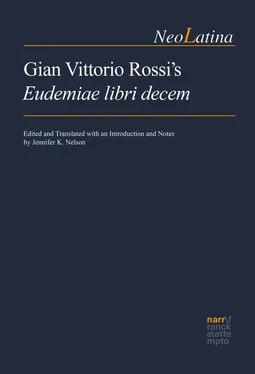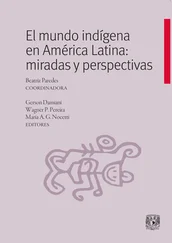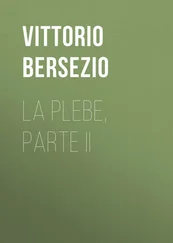What more suitable, useful, and agreeable means of censure can be found, that can effectively insinuate itself into the minds of men, than that which exposes, in fictional characters—with real names concealed, times and locations changed—the sinful dispositions of the mind, as if through fun and jest? Ancient writings testify to the fact that this was always lawful and permitted according to both Greek and Roman custom. Was it not HoraceHorace who said, “Who is to prevent someone from telling the truth, as long as he is laughing”? “But,” they insist, “in your discourse you present the vile passions of certain private individuals, passions that are filthy even to think about let alone recount, on full display as if in living color.” Those people are perhaps among those whom it pleases to pursue these base and shameful acts, rather than to run away once they have partaken in them. So what if these acts are, as you say, foul, execrable, and worthy of every punishment? They nevertheless contain a certain hilarity that has the power to spur useful laughter and, most importantly, to expose and mock the schemes and tricks of shameless men.23
Most central to RossiRossi, Gian Vittorio’s defense of his work in this letter to MerlinoMerlino, Clemente is the notion of “useful laughter,” which is an inherent part of the soft Horatian satiric mode. HoraceHorace’s embrace of wit and humor as a corrective to societal ills is clearly expressed, for example, in Sat . I.X.14–5.24 This spirit, fortified by Rossi’s almost direct quotation in his letter of Horace’s Sat . I.I.24–5, is congruent with the author’s desire to be seen not as a harsh mocker like LuciliusLucilius Gaius, PetroniusPetronius Arbiter, or LucianLucian of Samosata, but as a gentle humorist like Horace, who desires to guide people to good behavior through laughter. Indeed, taking a cue from the reaction to his satire and his apologiae in defense of it, Rossi weaves this Horatian satiric mode into his expanded 1645 edition. Books Nine and Ten are more generic in their humor—targeting caricatures or ridiculous archetypes rather than actual people—and they contain more instances of praise, the most notable being a 177-line poem praising HumanusHumanus (Urban VIII), his pseudonym for Pope Urban VIIIUrban VIII, Pope. What is more, the Horatian satiric mode is personified in a character named IcosippusIcosippus (Gian Vittorio Rossi), an accomplished scholar who was criticized by a few scolds for a certain book he published—in which he took to task the questionable morals of certain individuals—but then defends himself in a long speech about the virtue of useful laughter. That Icosippus is a stand-in for Rossi himself is clear, as is the presence of the themes at the heart of the apologia as encapsulated in the Merlino letter.
Despite RossiRossi, Gian Vittorio’s declared indebtedness to PetroniusPetronius Arbiter’s Satyricon ,1 a more direct model for Eudemia was John BarclayBarclay, John’s Euphormionis lusinini satyricon , published in two parts (in 1605 and 1607 respectively).2 The most significant Neo-Latin Menippean satire of Rossi’s time, Euphormionis lusinini satyricon tells the story of EuphormioEuphormio, a traveler from the idyllic fictional land of Lusinia, who is shocked by the corruption he finds in the land where he has arrived: seventeenth-century Europe. Part One of Barclay’s satire consists of the first-person narration of the title character Euphormio’s travels throughout Europe where, as David FlemingFleming, David A summarizes, he
encounters many of the social and professional classes of the early seventeenth century … [and] discovers through bitter experience the defects of all those whom he meets: the jealousy and internal rivalry of the clergy, the hypocrisy of physicians, the inconstancy of friends and lovers, the ostentation and selfishness of the nobility, the stupidity of rustics, the degeneracy of the learned.3
FlemingFleming, David A describes Part One of Euphormionis lusinini satyricon as “purely episodic” with short and self-contained incidents, ending without much advancement in plot or character development, and with EuphormioEuphormio having “achieved nothing but disillusionment and bitterness.”4 Part Two coheres much more as a narrative, consisting of “a few large sections, each of them embracing a considerable number of interrelated incidents” that together move the plot toward a singular goal: Euphormio’s reception and establishment in the court of King Tessaranactus (King James I) in the court of Scolimorrhodia (England).5 Eudemia ’s first-person narrative in the voice of Flavius VopiscusFlavius Vopiscus Niger (Gian Vittorio Rossi?) Niger; the nonerotic nature of his main characters; his criticism of thieves, moneylenders, priests, quack doctors, and charlatans; and the disjointed, inconclusive nature of the narrative, are all reminiscent of BarclayBarclay, John’s satire, particularly Part One.
BarclayBarclay, John’s Euphormionis lusinini satyricon was immensely popular, appearing in almost fifty editions, including multiple translations published over the course of a century.6 It was an important milestone in European literature for at least two reasons: first, as FlemingFleming, David A writes, “with the single exception of Don Quixote … [it] was the most important work of prose fiction published in Europe in the first decade of the seventeenth-century”7; second, because it was the first major roman à clef , a genre that remained popular for the remainder of the century.8 Satire’s referential nature, pointing to people and events outside itself, provided fertile ground for the development of such novels. In the words of Dustin GriffinGriffin, Dustin H., “Satire likes to name names; it attracts ‘keys.’”9 Even in this aspect, Eudemia was no exception.
In the section above on Eudemia ’s publication history—where RossiRossi, Gian Vittorio’s 1646 letter to Kaspar SchoppeSchoppe, Kaspar is cited, in which he explained how the book came to be published in Leiden—we saw how Rossi situates his work within the genres of Menippean and verse satire. However, in that letter he additionally claims the genre of romantic fiction in the vein of Argenis Argenis, BarclayBarclay, John’s most famous work. Barclay’s novel tells the story of the princess Argenis, daughter of Meleander King of Sicily,10 who is secretly betrothed to Poliarchus but must fend off two other suitors, the valiant Archombrotus Archombrotusand the villain Radirobanes. The narrative arc of Argenis , with its plot driven by obstacles—including rivalries for her affection, pirates, shipwrecks, wars, conspiracies, poison, duplicity, and disguise—that separate the two lovers and delay their happiness, is typical of the romantic genre.11 In addition to being a romance, Argenis is a political allegory depicting the sixteenth-century wars of religion in France.12 Barclay combined the romantic and historical genres to create a wholly new one, the political romance, and did this so successfully and with such a high degree of artistry that his novel enjoyed enormous popularity, going through more than sixty editions, including translations into more than ten different languages.13
Similarities between Eudemia and Argenis Argenis exist, but they are few in number. For example, both are extended works of Latin fiction combining prose and verse, both were written for an elite, intellectual audience, and are replete with allusions to ancient literature, and both are romans à clef . On the whole, however, RossiRossi, Gian Vittorio’s comparison of his work to Argenis is telling mostly in its inaccuracy. Most significantly, Eudemia is almost entirely void of romantic elements (the inserted tale of OlindaOlinda and PhilotasPhilotas in Book Four being the one exception). The protagonists are three men—the two Romans and their guide GalloniusGallonius (Gabriel Naudé?)—who harbor no romantic or sexual interest for each other. The episodic, haphazard plot has no overarching narrative structure and leads to no real conclusion. In addition, while BarclayBarclay, John, in the assessment of Mark T. RileyRiley, Mark T., treats the issues of his day in “an elevated and serious tone, a great imaginative power, and an acute judgment in the treatment of political and religious questions,”14 Rossi’s observations about the inhabitants on the island of Eudemia are, on the whole, petty and mocking rather than insightful and advisory, and the situations he describes are either too specific and ludicrous, or too commonplace (e.g., attacks against priests and moneylenders), to be applied as general moral lessons. Even the two authors’ use of the key technique differs significantly: As Riley explains, the main characters in Barclay’s Argenis
Читать дальше












